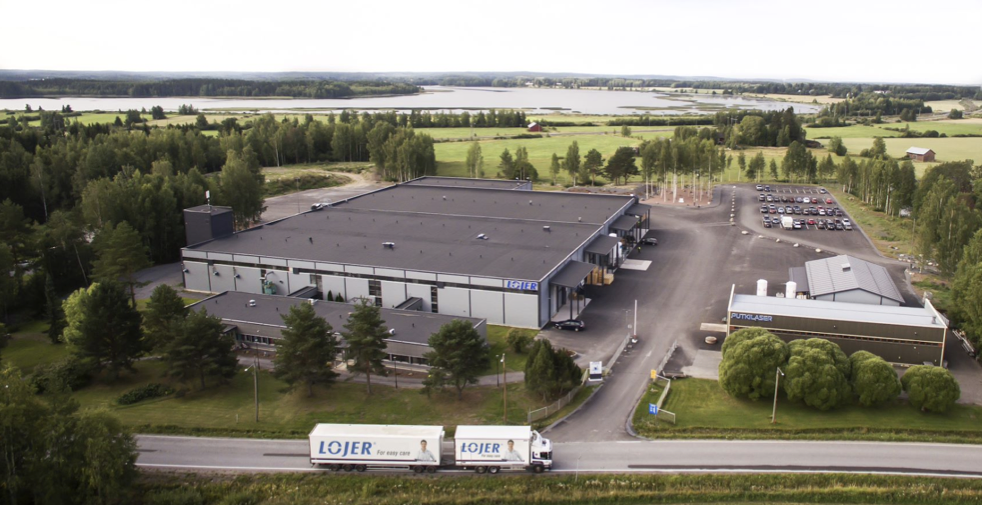- COMPANY
Lojer ( https://www.lojer.com )
- SEMINAR’s focus
Life cycle of future smart hospital beds
- DESCRIPTION

Lojer is a leading Finnish manufacturer of hospital and care furniture and the largest domestic employer in the industry. With a history of over 100 years, Lojer’s high-quality and durable products have made it well-known around the world. Its product range includes hospital beds, treatment chairs, operating tables, and physiotherapy equipment.
Lojer’s goal is to offer its customers high-quality, user-friendly, and durable solutions for healthcare needs. The long lifespan of its products benefits both the customer and the environment. Domestic production and environmental responsibility are among Lojer’s core values.
Lojer’s products are used in over 115 countries, and its export sales account for 60% of its 50 million euro revenue. In addition to equipment, Lojer also offers maintenance services in the Nordic countries and guarantees spare parts for at least ten years. Lojer’s future prospects are strong, and the company plans to continue developing innovative solutions for healthcare needs.
However, the future requires new perspectives. The entire life cycle of the equipment needs to be a larger part of the business. The importance of services is increasing, and digitalization enables new solutions. Regulations and existing equipment may slow down the adoption of new technology.
- CHALLENGE.
If you pay attention to today’s hospital beds, they are not smart. The current technology that hospital beds utilize are mainly motors and rotors. Technology that allows beds to modify its position to improve the comforts of patients or facilitate the examination of individuals by medical experts.
There are many reasons why the smartness of the hospital beds are limited today. Among those reasons we state three:
a) Safety of the patients
Avoid any accidents that could affect the security of the patient. To avoid accidents, the medical industry has strict guidelines for medical equipment, including beds. In the category of medical devices that offer information to medical professionals, these devices must be accurate and precise to keep the security of the patient. You can see an example of those regulations reading these documents: EU Class Medical Devices regulations, Notes for manufacturers of class 1 medical devices. It is word noticing that guidelines are not the problem but assure that each one of the products utilized in the health industry complies with those guidelines to avoid any accident.
In the case of a hospital bed, for example, the manufacturer should assure that each technology that makes a hospital bed “smart” must avoid any risk, keeping the patient secure. If a software is involved in a smart bed, then might need to be updated or calibrated, which delivers questions such as: how can one assure that there are no persons sitting on the bed when the software update is performed? Or proof that no-one was sitting on the bed with software was updated? Or how can we assure the high quality monitoring of the “smartness” of a hospital bed.
Add digital technology to hospital beds might affect the security of the patients, risking their lives. Therefore we should be clever of what smartness we can add, that keeps the patient secure and adds a value to the health workers and patients.
b) ICT expertise
Currently, most of the current users of the hospital beds are nurses (mostly between 50 or 60 years old), whose ICT skills are mainly of a consumer no a developer. They are often familiar with their phones and tables, which are user friendly and have uniform UX designs. Involving new “smartness” on hospital devices must be meaningful for the nurses, add a value and also be really easy to use and understand if something is wrong. The learning curve to use a new device must be minimal to do not disturb the already busy work days of the health care personnel.
c) Visions
As in other fields, being visionary is challenging. What does digital technology offer to hospital beds to benefit their users, e.g. patients, hospital personnel etc.? What type of intelligence will be meaningful that hospital beds could provide? and what services might emerge from that intelligence? These are the type of questions that, probably, we should explore an answer collectively.
Then what? – Responsibility of the life cycle of a smart hospital bed
When we analyze the life cycle of the future hospital bed, which might be a “smart” hospital bed, we must also reflect upon how the bed will be recycled after the useful life span. The recycling of beds requires reflection because in order to keep patients safe, these beds utilize antibact erial materials, e.g. a thin layer of silver. Therefore, hospital beds are challenging to recycle and if we add more digital technology on them, it means that we will also generate e-waste from the bed. How do we suggest we should recycle these future hospital beds responsibly?
erial materials, e.g. a thin layer of silver. Therefore, hospital beds are challenging to recycle and if we add more digital technology on them, it means that we will also generate e-waste from the bed. How do we suggest we should recycle these future hospital beds responsibly?
In this session we will:
Task:
- Explore ideas and visions of different type of meaningful and smart approaches to future hospital beds
- Reflect upon potential services and added value that the smartness of hospital beds can offer to the health care services? (how the data or new technologies could be commercialized? What would be your price? Your business model? )
- Gain an insight on how can we recycle smart hospital beds
Outcome
- Ideas for the design of future hospital beds
- Action points for further development in the life cycle of a smart hospital beds of tomorrow (for short and medium and long term) & value of the new life cycle
- DAY and TIME
May 16th, 2023 from 8:00 am to 17:00 hrs.
- SEMINAR LOCATION and TENTATIVE SCHEDULE.
Lojer Sastamala
Ruukkupolku 3, 38210 Sastamala, Finland
Transportation from UTU to Lojer will be provided for the enrolled participants.
8:00 depart from UTU.
9:30 approx. Arrival Lojer
9:30 – 10:00 Introduction
10:00 – 11:00 Visit Factory
11:00 – 11:30 Presentation of the challenge by Lojer
11:30 – 12:00 Lunch
12:00 – 14:00 Team work
14:15 – 15:30 start presentation – discussion
15:30 return to UTU
17:00 UTU
- ENROLLMENT
Please enroll to the seminar session by filling the following form: https://link.webropol.com/ep/lojer-hospitalbed
The enrollment closes on Thursday May 11th at 16hrs.
- PRE ASSIGNMENT
To prepare ourselves for the session with Lojer, and enrich our conversation during our time together we should prepare ourselves.
You can find the instructions of the pre-assignment following this link.
The deadline for the submission of the pre-assignment is Friday May 12th
